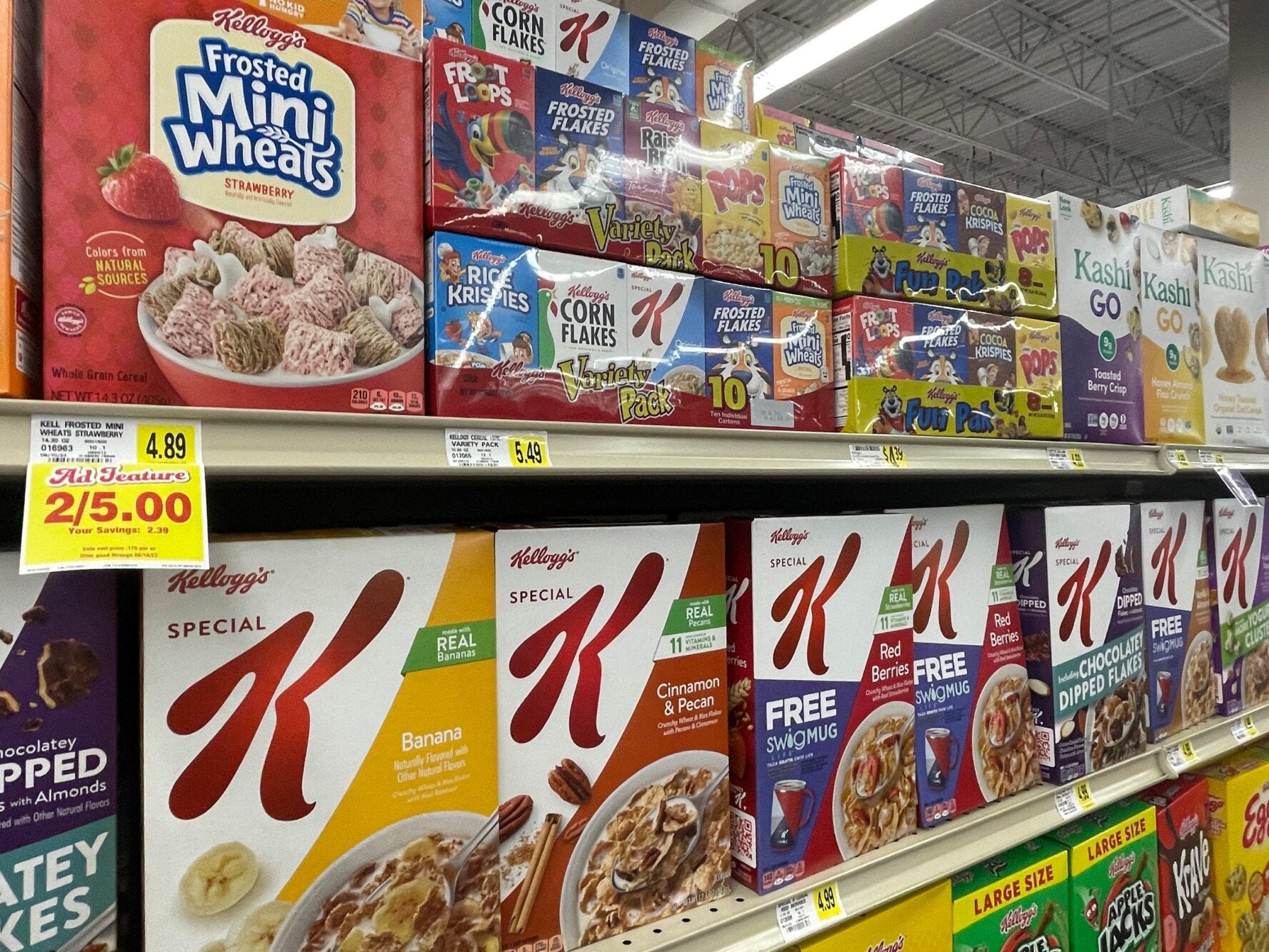
Kellogg’s gross margin is recovering faster than the breakfast cereal and snacks maker anticipated amid positive signs industry “bottlenecks” are subsiding.
Volumes did suffer in Kellogg’s second quarter from further pricing, which chairman and CEO Steven Cahillane described as “significant” in the past few years to offset rising input costs. However, the gross profit margin climbed more than 100 basis points on an adjusted basis.
“We are ahead of pace in this recovery, with year-on-year expansion coming sooner than expected,” CFO Amit Banati said as he discussed results with analysts alongside Cahillane.
“Much of this is driven by bottlenecks and shortages receding, which eliminates many of the inefficiencies and incremental costs experienced over the past year or more. In addition, productivity and revenue growth management continue to catch up to high, market-driven input-cost inflation.”
Adjusted, the margin rose 130 basis points in the quarter to 33.7% and was up 110 points year to date at 32.5%. On a currency-neutral basis, it climbed 70 points in both periods to 33.1% and 32.1%, respectively, but still lags the pre-Covid level of 33.7% in 2019.
Banati added: “While we have a way to go before we get back to pre-pandemic levels, this performance gives us increased confidence in our ability to recover margins. There is no change to our outlook for expansion in the second half. But Q2’s better-than-expected performance moves up our full-year outlook for gross margin to be somewhere around 50 basis points of expansion.”
The estimate implied a drop-off in the margin trajectory in the second half, leading analysts to question Banati’s outlook.
“I wouldn’t say there’s a change in trend. I think we had always said gross margin would be up during the year,” he responded. “The supply chain is performing really well, we’re seeing that in COGS, we’re seeing that in service levels, and we’d expect that trend to continue.”
Banati added when asked for clarification: “There’s a little bit of variation based on seasonality between the quarters, but from an underlying standpoint, we continue to expect gross margin to be up in the second half.”
Price versus volume
Kellogg, meanwhile, raised its outlook for organic growth for the second time this year after sales rose 7.1% in the quarter to $4.1bn. They were up 10.3% for the half at $8.3bn.
Organic growth is now expected at “approximately” 7%. The guidance was upped in May to 6-7%, from 5-7%.
While pricing was a benefit on the top line, volumes slipped. Pricing/mix was 14.7% in the second quarter, leading to a 7.6% volume decline. Year to date, price/mix was 15.1%, with volumes down 4.8%.
Banati said some of the volume drop was associated with rebuilding cereal inventories in the wake of last year’s plant fire in Pennsylvania and worker strikes at four US facilities.
“As expected, price elasticities continue to move higher around the world and this weighed down our volumes. Also contributing to our volume decline was lapping last year’s replenishment of trade inventories, particularly as we recovered from the cereals strike.”
Cahillane suggested in the context of Kellogg planting “significant pricing over the last several years” that consumers are “ever more conscious of the strains on their household budgets”. However, he said the company had not “seen meaningful moves in private label”.
He added: “When you take the level of pricing that we’ve taken, you have to see elasticities moving higher. We’ve been planning on these elasticities returning and they have returned.
“I would say on a go-forward basis, we’re more optimistic and more constructive about our volume. I don’t see this volume continuing [at] this level, I see sequential improvement.”
Kellogg also raised its guidance for operating profit and earnings per share. On a currency-neutral basis, adjusted operating profit rose 15.8% in the half to $1.1bn. It is expected to increase 9-10% for the year, from a previous estimate of 8-10%.
EPS, which climbed 3.9% year to date to $2.37 in adjusted, currency-neutral terms, is now seen down in a range of 1-2% versus a 1-3% decline previously.
Net income for the year so far was $664m, a decrease of 13.%.
Cahillane said: “There’s no question this has been an unprecedented time in this industry with the type of pricing that’s been necessary to take because of the input-cost inflation. But we’ve got lots of dry powder as we think about the second half of the year to drive real quality merchandising.”
